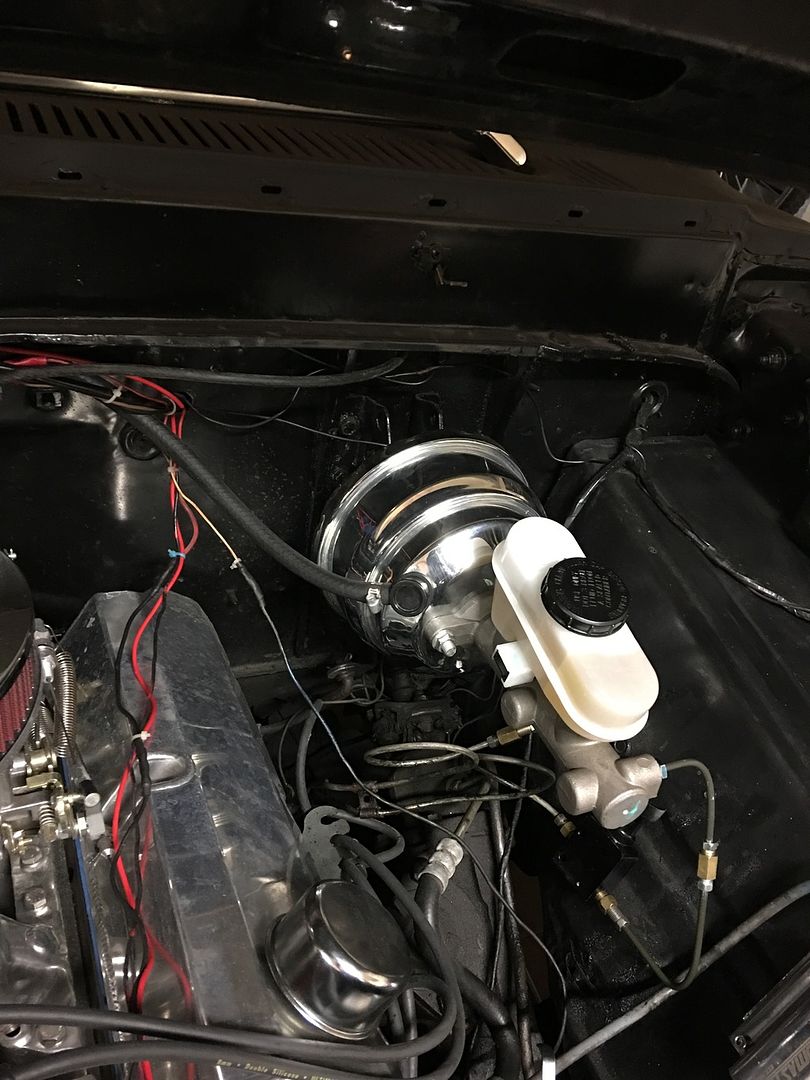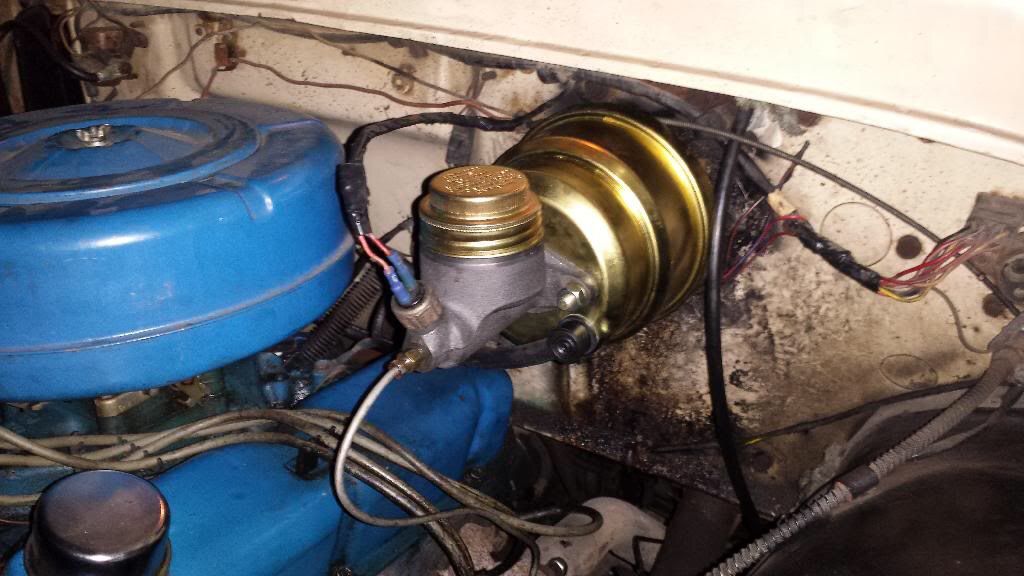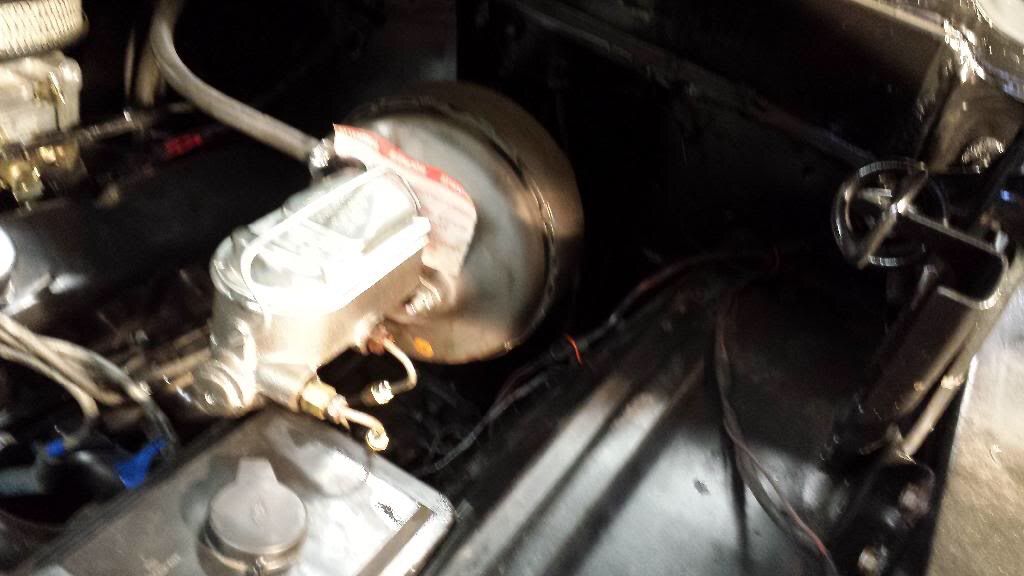Brake components are designed by brake engineers to go together as a complete system for any given vehicle. However, if you break it down into simplistic terms, a brake booster is just a force multiplier. It has no idea what type of brakes you have (drum/drum, disc/drum or discs/disc) nor does it have any clue what style MC you are running.
A single diaphragm, or, a more powerful dual diaphragm brake booster, is going to generate a certain amount of force against the MC, dependant on the total surface area of the booster diaphragm(s), the amount of vacuum signal on the booster and by how much force the driver is applying on the brake pedal.
From there, it will depend on the bore diameter of the MC as to how much output pressure the MC places on the brake components, by how much force the driver is applying to the brake pedal.
Your booster is the single diaphragm style, as opposed to a dual diaphragm. The stock bore diameter for that MC should be 1.00" but, someone could have installed anything on it. Smaller bore diameter MCs will produce more output pressure for the same amount of force placed on the brake pedal, but will displace less fluid volume. The trade-off is the total pedal travel will increase.
A larger bore MC will move more fluid volume but, it will produce less output pressure. A larger bore MC will generally have a much firmer pedal, a lack of feel for brake modulation, less forward brake pedal travel and is likely to make it difficult to put enough force on the pedal to get the vehicle to stop within a reasonable distance.
I would check the engine vacuum to make sure you're getting a vacuum signal to the booster of 18"-20" inches Hg. Less than this and the booster will not operate at its maximum output potential. I would also adjust the brake drum shoes out and verify that there's no residual air in the brake system.
If all this is done or checks out, the only way to increase the output of the MC is to drop down in bore diameter. If you have a 1.00" bore, you may have to go to a 15/16" MC bore diameter.
Another alternative is to replace the single diaphragm brake booster with a more powerful dual diaphragm unit. It will be a direct swap with your existing firewall brackets. If this is the route taken, you'll likely have to go up in MC bore diameter so that the brakes don't become overly sensitive to the application of the brake pedal --something on the order of a 1-1/16" MC bore diameter.
This is a '75 F350 dual diaphragm brake booster in my '69 F100 short bed Ranger with a 1-1/16" bore '95 Explorer MC. I have '77 F100 discs on the front and stock '69 drums in the rear. This setup works very well, whereas, the brakes used to really suck.
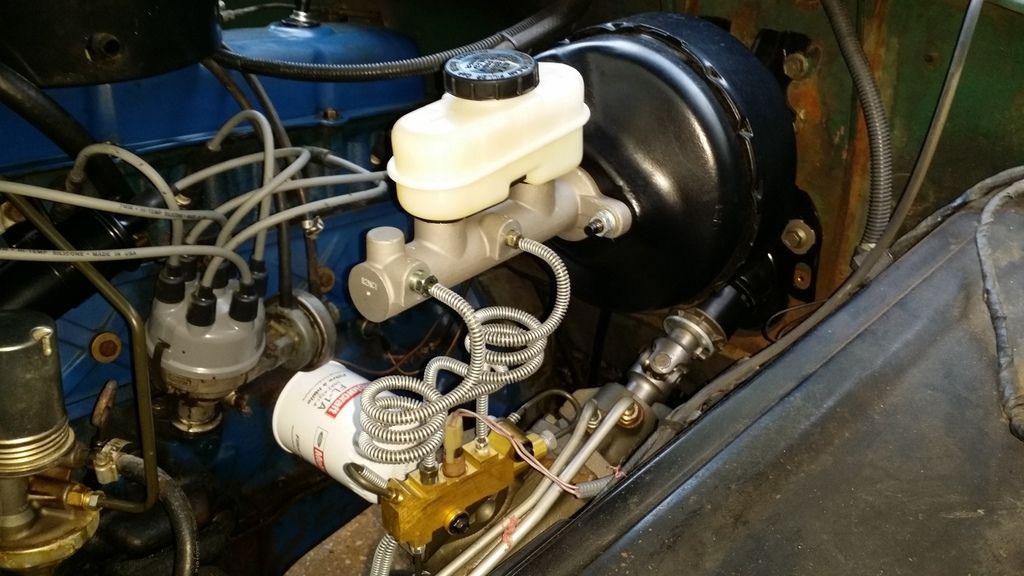
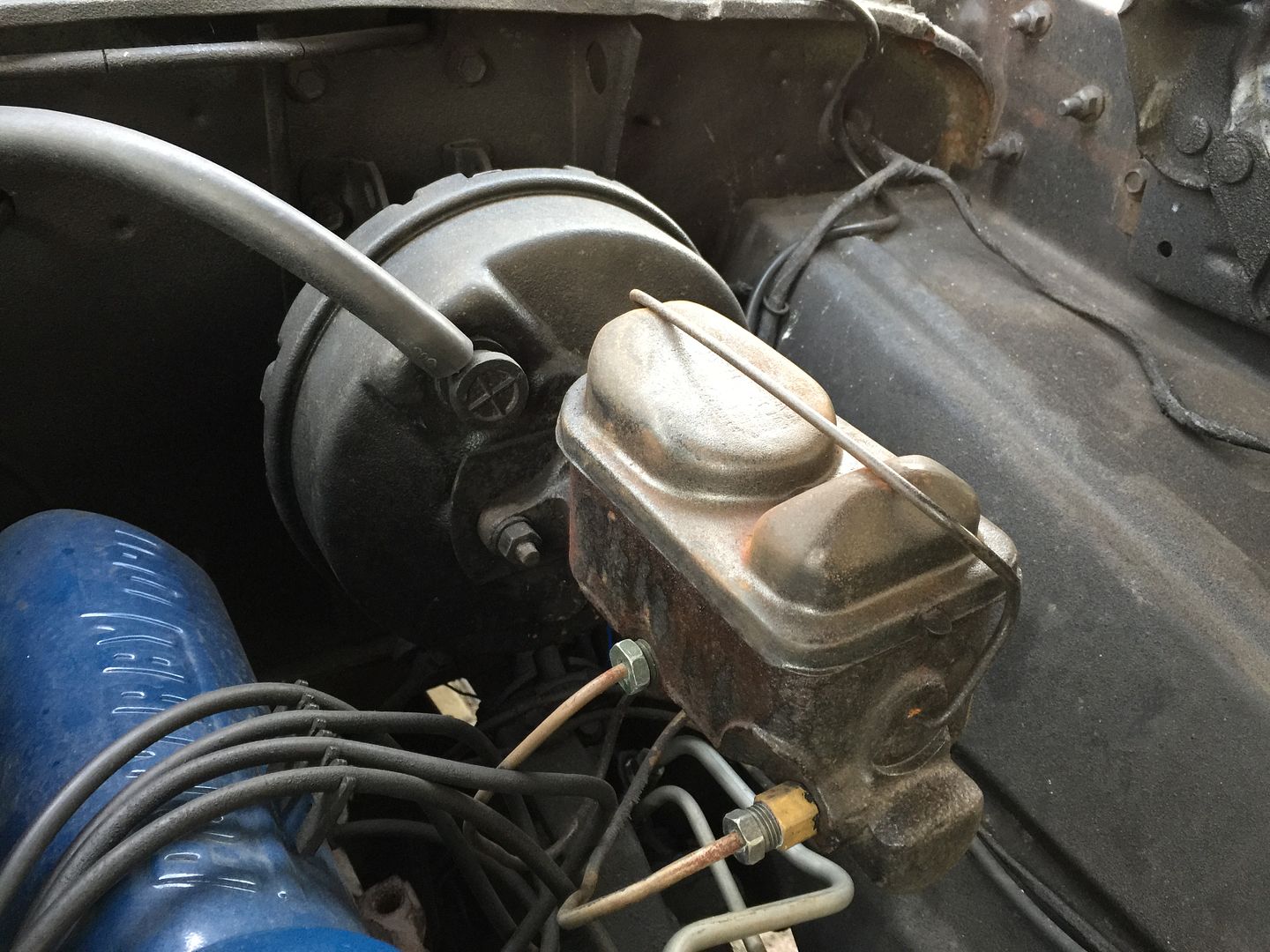 [/URL]
[/URL]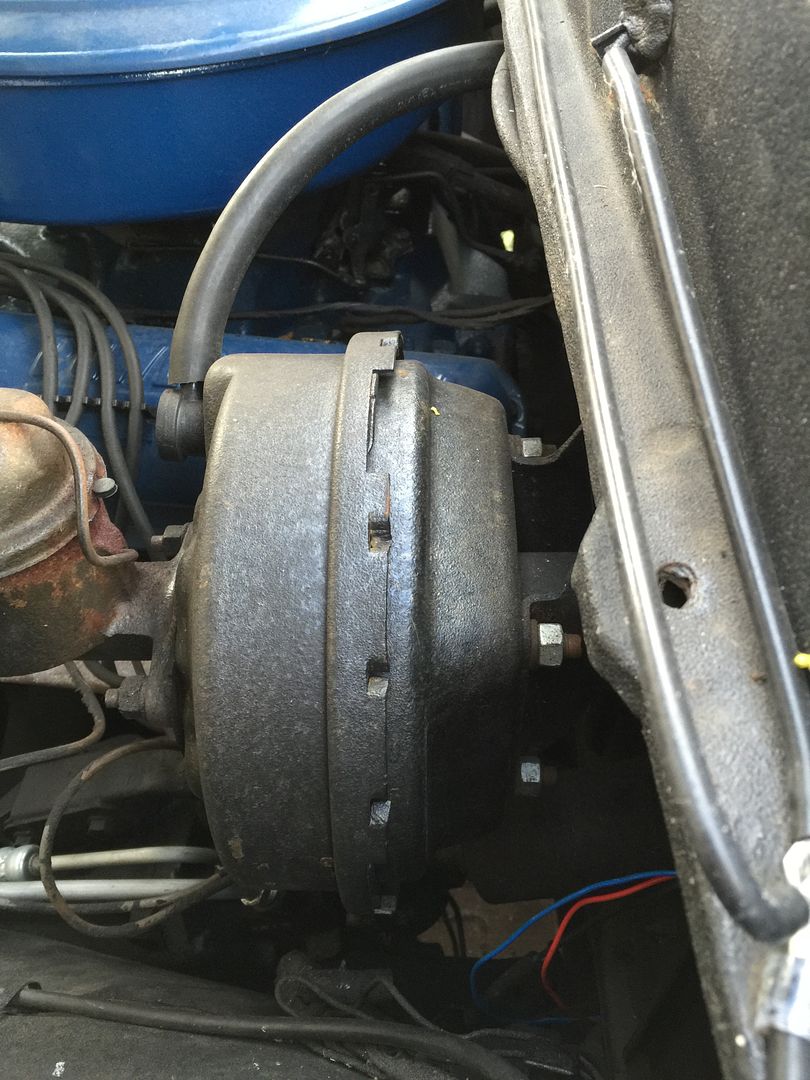 [/URL]
[/URL]



